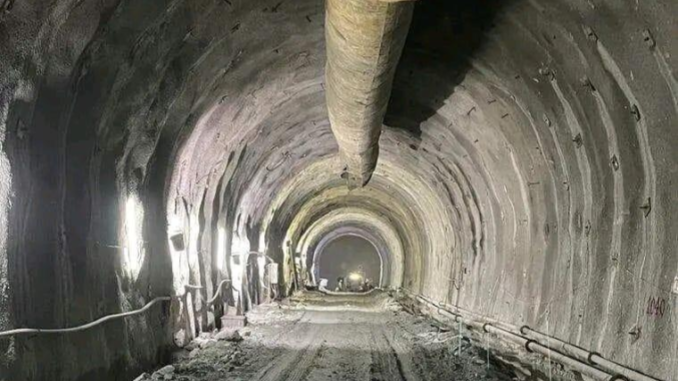
In a significant achievement for Indian Railways, the Sivok-Rangpo Rail Project (SRRP) has successfully completed its second-longest tunnel, tunnel number T-01, spanning 4224 metres. This critical development occurred on February 27, 2024, marking the end of mining activities for all the Adit tunnels in the project. The tunnel is situated near the iconic Coronation Bridge in the Darjeeling District of West Bengal, a region known for its challenging geological and seismic conditions.
More Details:
- The length of the Main Tunnel of T-01 is 4224 metres, along with an Evacuation Tunnel of length 855 metres situated near the Coronation Bridge in Darjeeling District, West Bengal.
- The Main Tunnel traverses through vulnerable and challenging geological and seismic conditions of the Younger Himalayas. Like all other tunnels in the SRRP, to counter vulnerability of the ground mass, the latest and most sophisticated tunnelling technology, i.e., New Austrian Tunneling Method (NATM) has been used here.
- The Sivok – Rangpo new rail link project connecting Sivok (West Bengal) and Rangpo (Sikkim) is about 45 kms long and is characterised by 14 nos. tunnels, 13 major bridges, 09 minor bridges and 5 nos. stations.
- The length of the longest tunnel (T-10) is 5.3 km and length of longest bridge (Br-17) is 425 metres. About 38.65 kms of the entire project alignment is passing through tunnels. 91.59 % of the tunnelling work has already been completed.
- At present final lining has been completed in tunnel T-14 & T-09 and is under progress in tunnel T-02, T-03, T-05, T-06, T-07,T-10, T-11 and T-12. Total 10.89 km has been completed till date. Work in all sections is being carried out round the clock 24×7.
Strategic Significance:
This ambitious project stands as one of India’s most prestigious national projects. Upon completion, it will mark the first time the state of Sikkim is connected to the national railway network, offering an alternative connectivity route to the region. The SRRP is poised to significantly enhance access and mobility for the people of Sikkim, contributing to the state’s economic and social development.
Conclusion:
The relentless pace of work on tunnels, bridges, and station yards highlights the dedication to early project completion. As construction activities continue unabated, the Sivok-Rangpo Rail Project is rapidly nearing fruition, promising to transform the landscape of regional connectivity and usher in a new era of railway infrastructure in the Himalayan region.
Source: Northeast Frontier Railway | Image Credit (representational): MoR

